I can only describe the National Press Photographers Association’s Donald Winslow, editor of that organization’s in-house journal News Photographer, and Bruce Young, the writer to whom he assigned the magazine’s report on this blog’s investigation of Robert Capa’s actions on D-Day and the subsequent fate of his images, as severely compromised from the outset of their coverage of our research relating to Capa and his picture editor at the time, John Morris.
That didn’t automatically preclude their production of something substantial that would contribute to the inquiry. But such an outcome would require their prefatory recognition and acknowledgment of their inherent entanglements and biases, and a determination to overcome them. No evidence of such understandings appears in the resulting feature story.
Some of those conflicts of interest on Winslow’s part have an institutional premise vis-a-vis his position in the NPPA, as discussed in an earlier post. But others involve Winslow’s personal and professional involvements with Morris, and the unabashedly pro-Morris and pro-Capa stances of both Winslow and Young.
•
Winslow’s initial reaction to John Morris’s recantation of the core of his 70-year narrative of the fate of on Amanpour’s CNN show, as manifested in a tweet and a Facebook post, expresses shock, as if this came as news to him. (“WTF?!?!?!? Former Picture Editor John G. Morris tells Christiane Amanpour that Capa’s ‘lost’ ‘images may never have been shot.”) Yet Winslow had known of this investigation for months, ever since I filed a formal complaint with the NPPA’s Ethics Committee on June 27, 2014; I snail-mailed and emailed copies of that complaint to Winslow.
Furthermore, Winslow must count himself among those gulled by Morris’s standard account of melting emulsion in LIFE‘s London darkroom, since he parroted it uncritically in the June 6, 2006 article that bears his byline at the NPPA website, “War, And Peace: Robert Capa, 62 Years After D-Day.”
Finally, with this now-published story on Capa’s D-Day already planned and commissioned, Winslow called God’s blessings down on Morris in a December 7, 2014 birthday tribute on Facebook. I’d imagine that would leave anyone hesitant to confront a long-term con job in which Morris was implicated. When the assigning editor is a John Morris fanboy, you can’t expect the assigned writer to make any effort to challenge Morris’s latest truckload of truthiness.
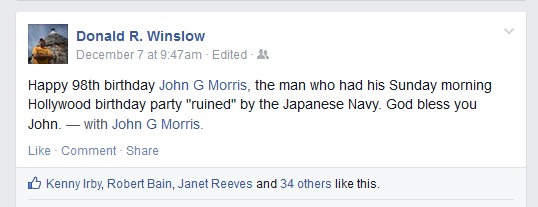
NPPA editor Donald Winslow uses Facebook to wish John Morris a happy birthday on December 7, 2014 (in advance of the major story on Capa in the magazine by Bruce Young)
So Bruce Young, the writer to whom Winslow assigned it, didn’t have to consult a meteorologist to figure out what this job required of him. But Young has his own overlapping commitment, at least to Capa. Understandable, then, that what he generated under those overt and tacit constraints doesn’t constitute journalism, but rather an attempt at damage control — in other words, public relations.
Robert Capa as Artificer
As I wrote in my preceding post, “Perhaps Winslow considered Young qualified for this assignment because he’d provided the NPPA with an earlier piece on Capa, “Death In The Making … For The Last Damned Time” (July 28, 2009), this one on the controversy over the authenticity of Capa’s Spanish Civil War image ‘The Falling Soldier, 1936.'” For the benefit of readers unfamiliar with that contretemps, research has shown conclusively that the best-case scenario for the circumstances of that world-famous picture’s creation has Capa and a group of Loyalist soldiers, on a quiet hillside far from the front, staging mock-combat scenes as subject matter for images the photojournalist would and did submit, complete with captions, as documentation of actual battles. During the course of this directorial project, it appears, a sniper hidden somewhere shot one and perhaps two of the participants in Capa’s theatrical production.
In other words, as even Capa’s authorized biographer and designated apologist Richard Whelan acknowledged reluctantly in 2006 (in this 2006 commentary for the PBS “American Masters” episode on Capa), and shortly thereafter in This Is War!, the catalog for the 2007 ICP exhibition, while the death was real, the battle was faked.
As detailed in Alex Kershaw’s unauthorized 2003 biography Blood and Champagne: The Life and Times of Robert Capa (pp. 40-41), Capa subsequently confessed as much to photographer Otto Hagel. Capa would almost certainly have confided the same secret in his good friend Morris. (Whelan, profitably employed by the Capa estate, acknowledged toward the end of his life that in producing his 1985 biography of Capa he’d ignored the passage of the interview with photographer Hansel Mieth, Hagel’s wife, in which that confession appears.)
Nor would that have been the last time (or, conceivably, the first) that Capa staged his images. Kershaw quotes from the Spanish Civil War diary of Alfred Kantorowicz, political commisar of the Chapaev Battalion, who noted the arrival of Capa and Gerda Taro at their command post near Peñarroya, south of Madrid, on June 24, 1937:
“Capa arranged a whole attack scene: an imaginary fascist position was stormed as men, with terrifying roars and passionate battle-lust, leapt and bounded doubletime into victory … [Capa] was very pleased with the result.” (Kershaw, pp. 54-55)
From the evidence of these separate accounts, Capa patently felt no compunction about making and publishing deceptive images. Nonetheless, as late as 2011 Morris, in deep denial, would assert that his “Hungarian brother” could do no wrong: “Those of us who knew Capa know he would never have faked a photo, that would simply have been impossible for him.” (In Bernard Lebrun and Michel Lefebvre’s 2012 book Robert Capa: The Paris Years 1933-1954, p. 7.)
Worth pointing out, therefore, that over the years Morris has lodged false accusations of faking combat images against two prominent photojournalists, doing both of them a great deal of professional harm before hard evidence forced him, in each of those separate episodes a decade apart, to retract his allegations and apologize to his victims. (Oddly enough, Morris omitted both these incidents from his 1997 memoir.)
That was Then, This is Now
At the time of Capa’s wartime work, photojournalism as we know it had not reached its 20th birthday. If it constituted a vital form of mass-media communication, and a profession, it had not achieved the status of a discipline, or a field.
No training programs existed, outside the narrowcast courses the military offered its photographers. No professional organizations offered guidelines or punished infractions; the American Society of Media Photographers (ASMP) was not founded till 1944, followed by the National Press Photographers Association in 1946. No formal strictures, and few informal ones, applied at the time, certainly nothing so rigorous as those that recently resulted in the revocation of first prize in the 2015 World Press Photo annual contest for staging a photograph, and disqualified a full 20 percent of the winning entries to the WPP contest for digital alteration of the images.
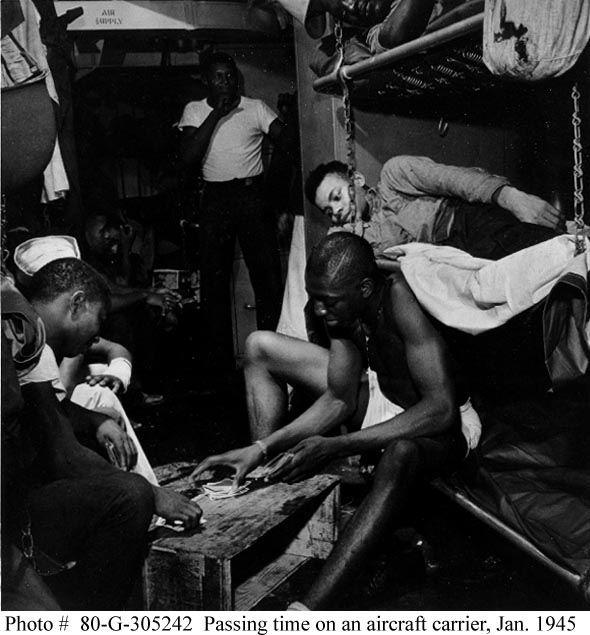
U.S. Navy Steward’s Mates, card game, near Manila, Nov. 1944. Photo by Steichen Unit, courtesy National Archives.
Photographers of that era regularly staged images presented as objective reportage (with full awareness of the conditions of their making on the parts of their editors and publishers). That directorialism ranged from improving or even designing the lighting of a scene to orchestrating the clothing and postures and activities of the subjects, the props and the settings. The pressures of the need for dramatic imagery that would energize the printed page on one hand, and pictures that would serve the propaganda imperatives of the moment on the other, conspired to create an environment in which passing off staged combat photos as genuine war reportage did not constitute as grievous a photojournalistic sin as it would in later decades.
As I noted at the end of a previous post, “In a 1993 interview with John Loengard, [photojournalist David] Scherman stated his own concept of photojournalism:
“It’s pictorialism with a meaning. … If you didn’t get the picture at the exact instant, you kept the meaning in mind, and you faked the picture, or reframed it. … I was enough of a journalist to realize that you invent a good picture. I was the pioneer of the made-up picture. The faked, invented picture. … During the war I did nothing but fake pictures.” (See “David E. Scherman: Self-Proclaimed ‘Pioneer of the Made-Up Picture'” at LIFE.com.)
Scherman (1916-1997), a contemporary of Capa’s, also covered D-Day for LIFE, on assignment from John Morris. If he proudly announced his proclivities in 1993, by which time no self-respecting working photojournalist would have dared to enunciate such a relationship to praxis, he surely made no bones about them in the 1940s, when such behavior evoked minimal if any disapproval and no formal censure. Morris, his picture editor during that period, can’t have remained oblivious to this penchant of Scherman’s, and Scherman’s approach can’t have differed radically from those of his confrères. Think here of Robert Doisneau’s classic 1950 image of young love in Paris, “Le baiser de l’hôtel de ville (The Kiss),” revealed decades later to have been staged.
Inconceivable that any 21st-century photojournalist would admit to such an attitude, and improbable that one would even practice it surreptitiously. The risk of discovery and disgrace is too high. That makes it anachronistic to hold photojournalists of Scherman’s generation to modern-day guidelines.
Which doesn’t obligate us, in retrospect, to turn a blind eye to it, or fail to apply current professional standards to proven past instances once we contextualize them in the visual culture of their day. To the contrary: Only by acknowledging the different standards of photojournalistic “truth” under which photographers of that era went about their work can we weigh the credibility of their images, forgiving what we consider excesses that no one saw as such in their time — without denying that era’s more relaxed (or nonexistent) rules, and with acknowledgment of the problems they pose for present-day interpretation and assessment of those photographs.
Circling the Wagons
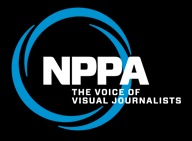 The NPPA states that its Code of Ethics “is intended to promote the highest quality in all forms of visual journalism and to strengthen public confidence in the profession. It is also meant to serve as an educational tool both for those who practice and for those who appreciate photojournalism.” Among the NPPA code’s specific injunctions:
The NPPA states that its Code of Ethics “is intended to promote the highest quality in all forms of visual journalism and to strengthen public confidence in the profession. It is also meant to serve as an educational tool both for those who practice and for those who appreciate photojournalism.” Among the NPPA code’s specific injunctions:
• “Be accurate and comprehensive in the representation of subjects.”
• “Resist being manipulated by staged photo opportunities.”
• “Recognize and work to avoid presenting one’s own biases in the work.”
• “While photographing subjects do not intentionally contribute to, alter, or seek to alter or influence events.”
• “Respect the integrity of the photographic moment.”
I find it difficult to reconcile any of the above directives, much less all of them, with the evidence of Capa’s simulation of several combat situations to enable his production of ersatz war photographs to further the causes he favored politically — and, not incidentally, for financial gain and the burnishing of his professional reputation. That doesn’t trouble Young, who, in his correspondence with J. Ross Baughman concerning our investigation of Capa’s D-Day, described himself as a “Capa defender” who is “inclined to give Capa a break,” and who, in his piece about the controversy over “The Falling Soldier,” openly declares himself a “Capa-phile.” Nor, apparently, does it give Winslow pause.
(Note: For reasons unclear, this article appears twice at the NPPA website, the second time datelined Nov. 12, 2012. For reasons equally unclear, Young assumes therein that he would have to “use family connections to get inside the Capa collection [at the International Center of Photography]” — which is, at least nominally, open to any qualified researcher. I’ll have more to say on that score in a future post.)
So, despite the incontrovertible proof that Capa had no qualms about fictionalizing his pictures and submitting them to his editors as trustworthy reportorial accounts of the Spanish conflict, Young concludes that “We all can have our theories — some, like that of José Manuel Serrano Esparza, earned by dint of careful research and years of hard work. But in the end we are perhaps left just to decide whether The Falling Soldier picture is authentic.”
Thus he neatly elides the fact that in making that picture Capa committed multiple violations of the NPPA’s Code of Ethics, and did so on at least one other documented occasion. If an avowed “Capa-phile” can’t confront and acknowledge the plain fact that Capa didn’t scruple to stage combat photos for professional advancement and financial profit, we can’t expect him to address head-on the truth about Capa’s actions on D-Day and the fate of his negatives.
Obviously that “he said, she said” equivocation, and the “Capa-phile” bias underlying it, made Young the right man for this new Capa-related assignment. Just to ensure that he sat the fence once once again in addressing the investigation of Capa’s D-Day images, Winslow commissioned from him, as Young put it to me, “a neutral piece accounting for everyone’s stories and claims.” Matters of style aside, therefore, we can hold both Young and Winslow responsible for the approach and substance of the result.
I’ll get to the specifics of Young’s article in my next post.
•
(For an index of links to all posts in this series, click here.)



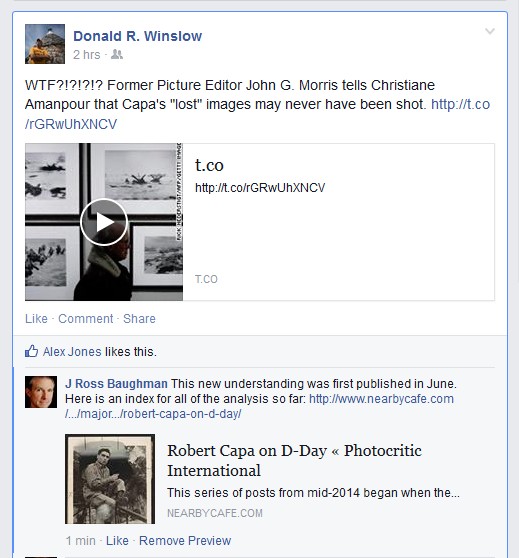
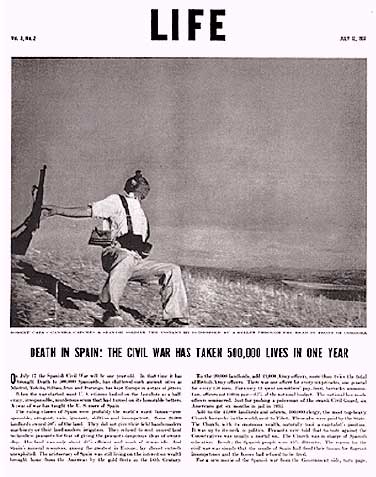
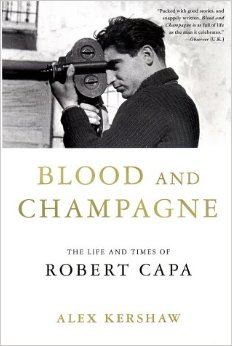
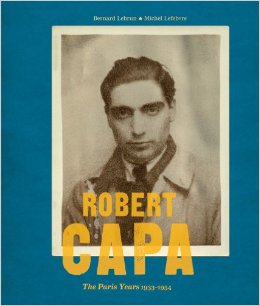
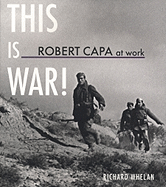
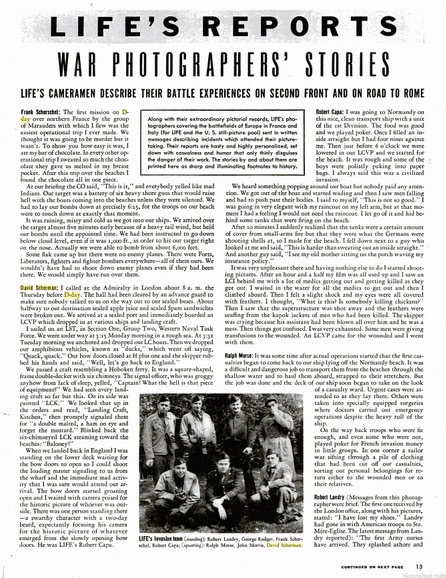

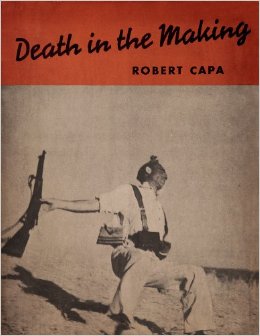
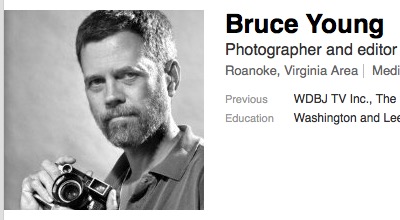




Leave a Comment